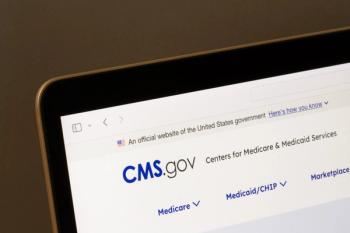
Statins May Reduce Risk of Complications in Heart Transplant Recipients
Two posters presented at the Heart Failure Society of America 2024 Annual Meeting looked deeper into the topic of statin use in heart transplant recipients.
Statins are among the most prescribed medications in the United States, with 92 million people using them in 2019.1 Research has shown that statins—which include drugs such as atorvastatin (Lipitor) and rosuvastatin (Crestor)—reduce both cardiovascular disease and all-cause mortality in people who are at an increased risk.2
Statins have also shown beneficial effects in heart transplant recipients, including reducing the risk of certain complications. However, many of the studies that provided this result were small or underpowered. At the Heart Failure Society of America 2024 Annual Meeting, 2 posters that were presented looked deeper into the topic of statin use in heart transplant recipients.
READ MORE:
In the first study, investigators from the University of California San Diego Cardiovascular Institute conducted a retrospective study to describe differences in statin regimen, lipid profile and cardiac allograft vasculopathy (CAV) development between heart transplant recipients who had different cardiovascular risk levels prior to their transplant.3 The study cohort included 87 patients who had a heart transplant between 2019 and 2020.
All patients had a survival of 1 year or greater, 2 lipid panels, and an intravascular ultrasound (IVUS) assessment at 1 year or after. Researchers collected data on patient demographics, IVUS and medication data, and lipid profile before the heart transplant and annually after the transplant. Patients were categorized into either high or low cardiovascular risk based on indication for heart transplant, history of diabetes and A1C levels.
Of the patients included in the study, 49% were considered high-risk. The study found that high-intensity statin use was initially more prevalent in high-risk patients, but there was no difference between the groups by year 2. At baseline, there was also no difference in lipid profiles. However, by year 2, high-risk patients had higher LDL-C, HDL-C, and non-HDL-C. In 37 patients, CAV developed within 2 years after their transplant, with the high-risk group having a slight increased risk.
“Downgrading of statin intensity after heart transplant was observed in high-risk patients, with a trend towards higher risk for CAV in this group,” the authors concluded. “Further studies assessing individualized statin regimens informed by pre-heart transplant cardiovascular risk and post-heart transplant lipid trends on CAV development are needed.”
In the second poster, investigators conducted a systematic review and meta-analysis to assess the role of statins in mitigating outcomes in heart transplant recipients.4 Data was collected from the Cochrane Central Registry of Controlled Trials, Medline, Embase, and ClinicalTrials.gov for studies published until February 2024. The review included 11 studies with a total of 2852 patients.
Of patients included in the studies, 2119 received statins and 733 did not. Investigators found statin use was associated with a 72% reduction in all-cause mortality, a 63% reduction in major graft rejection, and a 67% reduction in CAV. All of the outcomes remained statistically significant after researchers ran a sensitivity analysis. Additionally, a meta-regression analysis based on year of trial publication showed no statistically significant relationship with all-cause mortality.
“This meta-analysis suggests that statins may reduce mortality and prevent cardiac allograft vasculopathy, and severe graft rejection in heart transplant patients,” the authors concluded. “Larger placebo-controlled studies are still warranted to better characterize this association.”
Pharmacy practice is always changing. Stay ahead of the curve: Sign up for our
References
1. Matyori A, Brown CP, Ali A, et al . Statins utilization trends and expenditures in the U.S. before and after the implementation of the 2013 ACC/AHA guidelines. Saudi Pharm J. 2023 Jun;31(6):795-800. doi: 10.1016/j.jsps.2023.04.002. Epub 2023 Apr 11. PMID: 37228328; PMCID: PMC10203693.
2. Chou R, Cantor A, Dana T, et al. Statin Use for the Primary Prevention of Cardiovascular Disease in Adults: Updated Evidence Report and Systematic Review for the US Preventive Services Task Force. JAMA. 2022;328(8):754–771. doi:10.1001/jama.2022.12138
3. Silver E, Birs A, Timmer D, et al. Statin Therapy Trends And Lipid Outcomes In Heart Transplant Recipients. Presented at: Heart Failure Society of America 2024 Annual Meeting; September 27-30, 2024; Atlanta, GA. Poster 229.
4. Ibrahim S. Effects Of Statins On Outcomes After Cardiac Transplantation: A Systematic Review And Meta-analysis Of Published Studies. Presented at: Heart Failure Society of America 2024 Annual Meeting; September 27-30, 2024; Atlanta, GA. Poster 389.
Newsletter
Pharmacy practice is always changing. Stay ahead of the curve with the Drug Topics newsletter and get the latest drug information, industry trends, and patient care tips.





















































































































































